- Yokohama-shi Top Page
- Municipal Government Information
- Public Relations, Public Information, News
- Public Relations and Publications
- Public Relations Printed Materials
- Public information Yokohama
- Public information Yokohama-shi version
- Discover Yokohama Aya
- March 2024 Issue Yoko Yamazaki, "The Maria Luz Incident in 1872," an international trial in 1872.
Here's the text.
March 2024 Issue Yoko Yamazaki, "The Maria Luz Incident in 1872," an international trial in 1872.
Yokohama with sea, port, greenery, history, region, people and various attractions. We will deliver the color of this city as "Yokohama Aya Discovery". This time, the writer Yoko Yamazaki contributed about the Maria Luz incident in connection with Yokohama-Chinatown (Naka Ward).
Last Updated April 2, 2024
As for the publication contents of "public information Yokohama" March, 2024 issue "Yokohama Aya discovery", please see link.
1872 International Trial Maria Lus
Writer Yoko Yamazaki
Yamashita-Cho Koen, where Aiyoshiro was located (January 2024)
In 2002, Yokohama Yumeza, led by actress Kojiko Godai, performed a play called "KAIHORO". The background is Yokohama in Meiji 5 (1872). Aiyoshiro was a real building at the time, located in Yamashita-Cho Koen, Chinatown. There is a stage in the restaurant, where guests can enjoy the dishes while enjoying Chinese cuisine. It was a symbol of Yokohama and this play, where not only Qingjin (then China was Qingkoku), but also Japanese and foreigners living in settlements gathered. It was me who wrote the script. The story is based on the real story that I will introduce in the future.
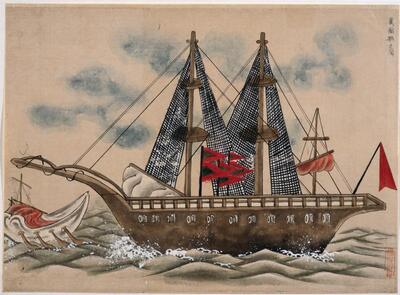
A picture of a sailing ship depicting a "Gikoku Funanozu" (collected by Municipal Central Library)
In 1872, the year when Basyamichi was lit and Japan's first railway was opened between Shimbashi and Yokohama. The opening of the port Yokohama was becoming more and more gorgeous. On June 4 (July 9, 1872), the Peru ship Maria Luz, who had encountered a storm and needed repair, entered Yokohama Port. A few days later, a few Qing people jumped into the sea from the ship and were rescued by a nearby British ship. Their story reveals that Maria Lus is a slave ship. Heleiro, the captain, said, "If you work in Peru for several years, you can return to the country with a lot of money," and gathered poor Qing workers in Macao. More than 200 men were on board, believed in it. But what was waiting for them was the chain of the bottom of the ship, and the poor treatment of not being given water or food.
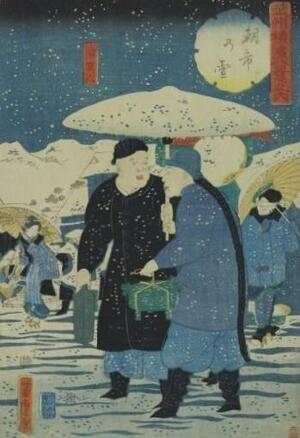
"Bushu Yokohama Hakkeinouchi Asaichi Noyuki" (collected by Kanagawa Prefectural Museum of Cultural History)
Human trafficking has been criticized internationally, just after the Civil War in the United States with slave release. You have to rescue the Qing people. Chinatown, a community of Qing people, had already been formed in the foreign settlement. However, their home country, Qing, has weakened due to the Akata War with U.K. But there is no power to help. On the other hand, Western powers have decided that Japan should solve the incident because it was discovered at the port of Japan. Despite the opening of the country, from the perspective of developed countries, Japan is still not aware of the international community. If you fight against Peru, it would be an international trial, but in 1871, the previous year, the Department of Justice was finally established. There is little experience in modern trials even in the country. In addition, the leaders of the government, including Hirobumi Ito, have been visiting overseas for two years. There was an air in the Japanese government that it was troublesome to leave it alone without involvement.
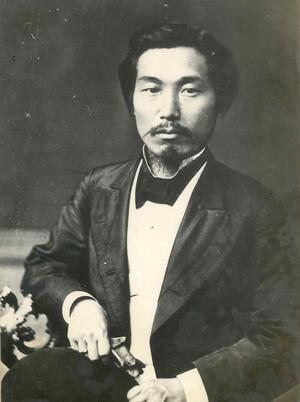
Taku Oe [1847-1921] (provided by the table association)
However, Foreign Minister Taneomi Soejima insists that Japan should not escape at such times. Taku Oe, a 25-year-old Kanagawa Prefectural Counselor, was selected for that role. While still young, Oe has a deep insight into human rights issues. In response to this, he became the Kanagawa Prefectural Ordinance (Deputy Governor). Consequently, Oe's role in this trial is to serve as a judge, prosecutor and lawyer.……If you have such power, you will be able to win, but not. For the fact that there were no experts yet, the content must be a modern trial that the international community convinces.
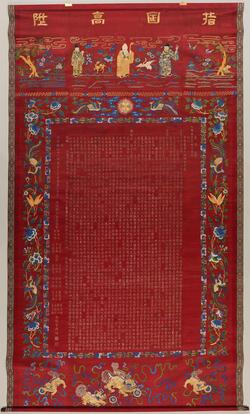
Takue Oe (collected by Kanagawa Pref.Library)
Oe first asked Captain Heleiro, saying, "I would like to ask each and every one of the people of Qing, so I want them to be sent to land once." Heleiro, who was licking that he would win anyway, responded to him. They were immediately moved from the ship to the temple, breaking the chain, and taking care of them. Since it landed in Japan, it is no longer under the protection of Japan. Heleiro's will cannot return to the ship. When he realized his failure, Heleiro hurriedly took action. Employs Frederick Dickens, a British protagonist who is proficient in Japanese and fluent in Japanese. What Dickens brought it to the court was the proof of a prostitute sold to Yukaku. Isn't this a sudden human trafficking? I wonder if Japan, who is doing this, will be blamed for human trafficking in other countries. Parents and others receive the purchase price, and the money ties the prostitute in the form of debt. It seemed that everything was in trouble, but Oe issued a prostitute liberation order in the prefecture without a haircut. All debts are scrubbed. The prostitute is a liberty. It's a very violent way, but he must be amazed at his courage and determination.
On the other hand, Oe was desperately studying the law of all nations. If the international community is convincing and win, it will not be possible to stand on par with other countries. It was an international trial that involved the Russian emperor, but the result was that Japan won the trial and all the Qing people were released. The Chinese people in Chinatown, who had been breathing, were delighted and sent the large flags to Oe Taneomi Soejima as a sign of appreciation.
Yokohama-Chinatown Chaoyang Gate (January 2024)
Yokohama-Chinatown survived the painful history of the Sino-Japanese War and the Sino-Japanese War. We must remember this history carefully, and as a citizen of Yokohama with a world-class Chinatown, we cannot help but hope to protect friendship at all times.
Author profile
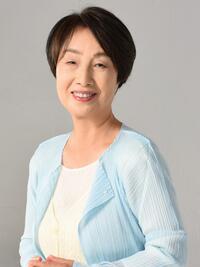
Yamazaki Yoko
Artist. Born in Kyoto in 1947, lives in Yokohama. Received the 32nd Jiangsu River Ranpo Award. There are many works set in Yokohama, such as "Yokohama Port Opening Emaki Red Cliff Woman", "Yokohama Tangjin Okichi Imon", and "Angel sings Blues".
[Reception end] Reader present
The application has been closed and prizes have been sent to the winners on Tuesday, April 2. Thank you very much for your application.
Thank you for always seeing "Public Information Yokohama" and "Yokohama Aya Discovery". By lottery from those who received their impressions, Yoko Yamazaki himself will present a signed book "Angel Sings Blues" to 5 people. If you wish, please refer to the following six items. ※Please specify and apply by postcard (to Yokohama City Hall Policy Bureau Public Relations Section, 6-50-10 Honcho, Naka-ku, Yokohama 231-0005) or e-mail (sss-saihakken@city.yokohama.jp). The deadline must arrive on Sunday, March 31, 2024.
※ 1.Postal code, 2. Address, 3. Name, 4. Impression, 5. I would like to read, 6. "I wish to present the March issue"
The winner's announcement will be returned by sending the prize. In addition, the personal information you receive will not be used for any purpose other than sending prizes.
Contact Yokohama City Hall Policy Bureau Public Relations Section TEL: 045‐671-2331 FAX: 045‐661-2351
Inquiries to this page
Public Relations Section, City Promotion Promotion Office, Policy Management Bureau
Telephone: 045-671-2331
Telephone: 045-671-2331
Fax: 045-661-2351
Email address: ss-koho@city.yokohama.lg.jp
Page ID: 409-794-827







